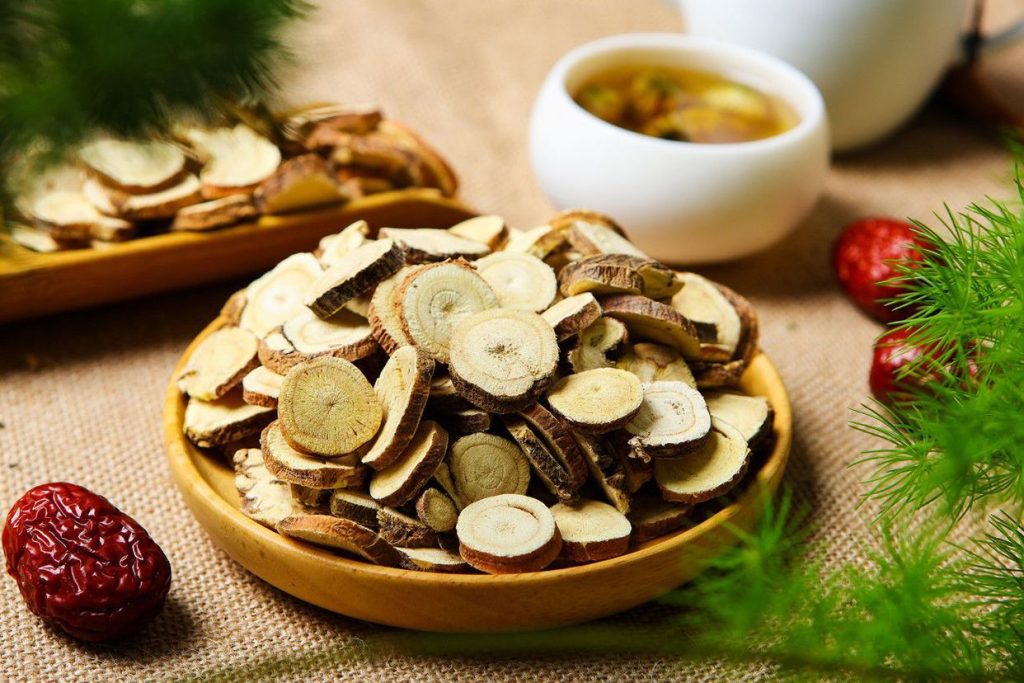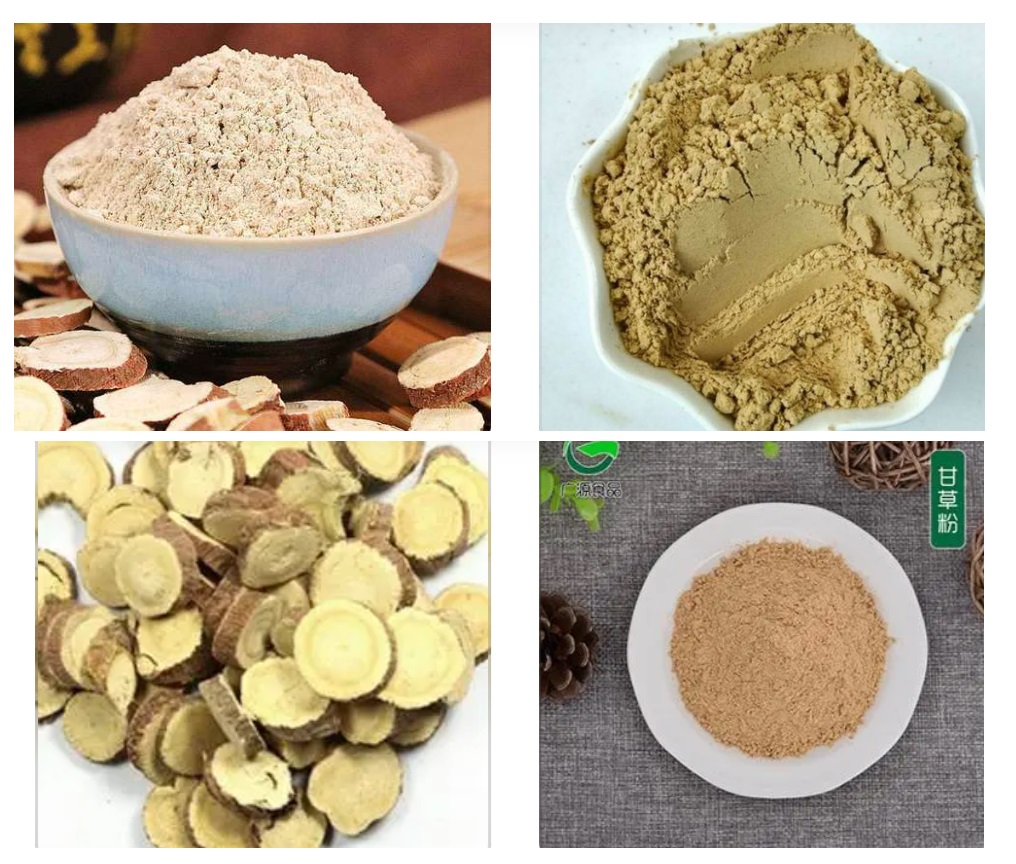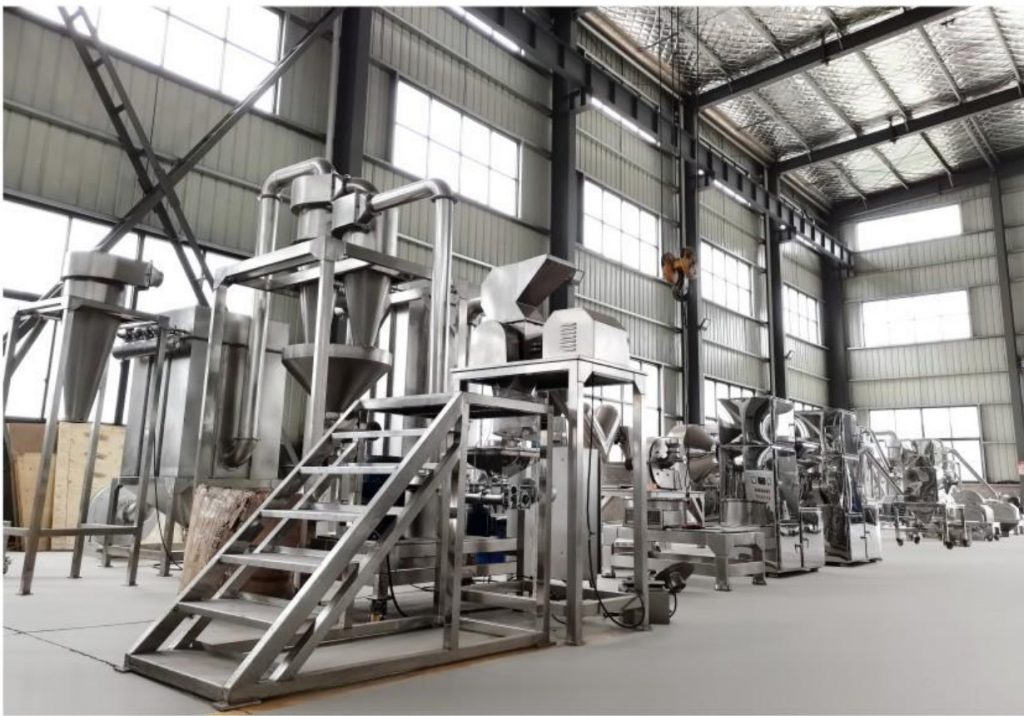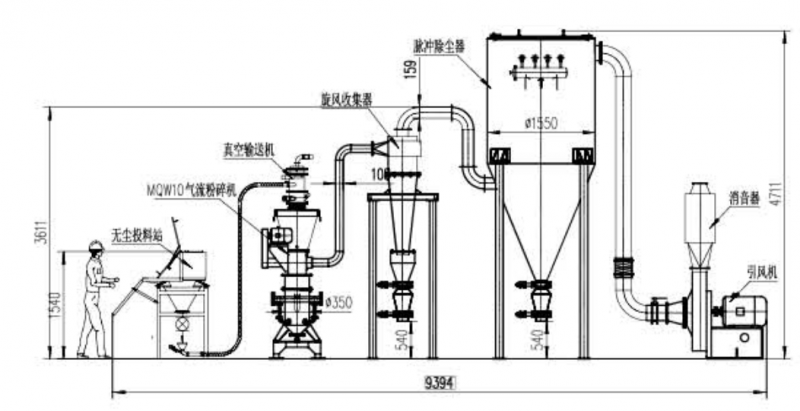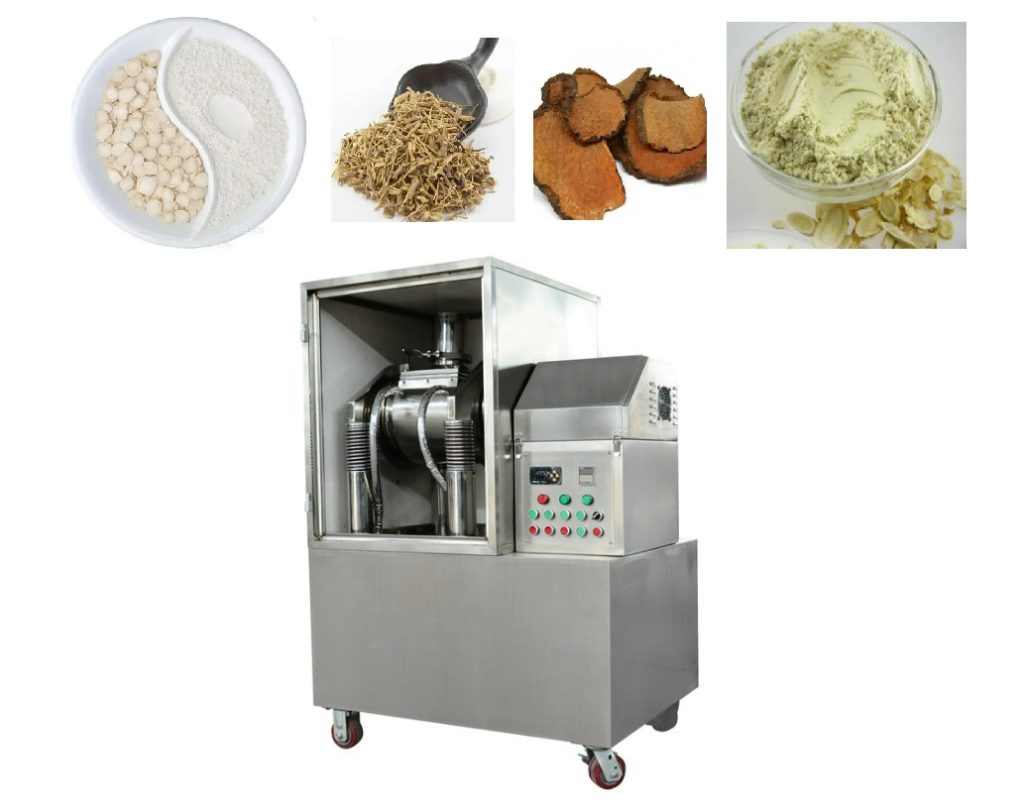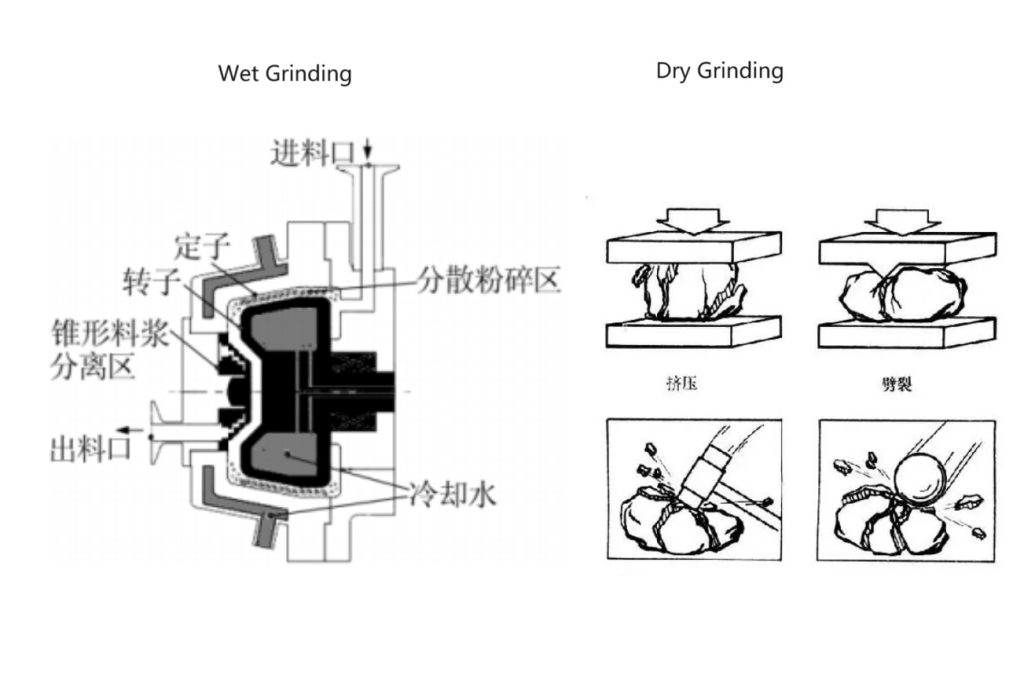YH Dry Powder Mixer
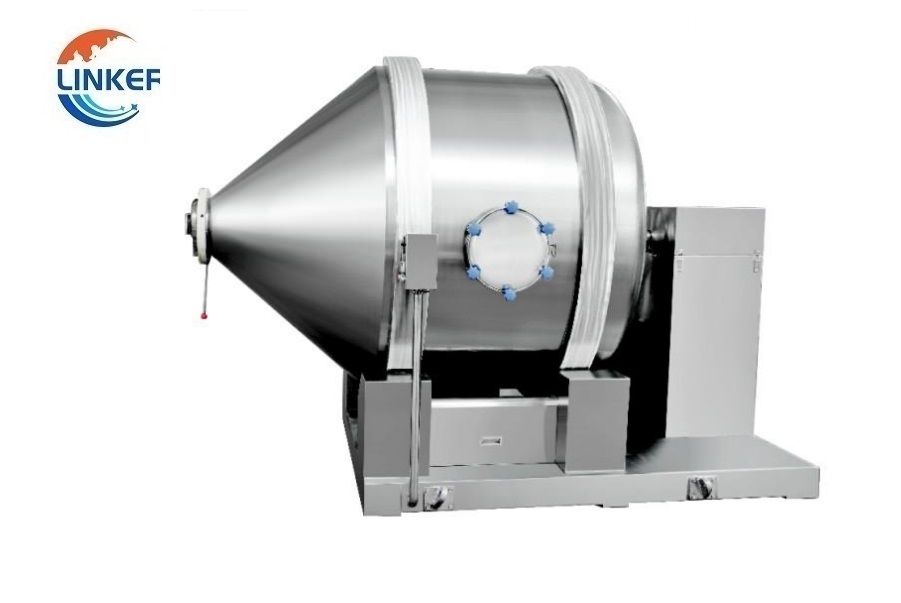
YH One Dimensional Mixer
- Suitable Blending Material: Dry Powder , Dry Granule
- Maximum mixing volume: 50-10000(kg);
- Volumn: 25-5000L;
- Rotating Speed: 0-18;
- Machine Weight: 250-3800(kg);
- Total Power: 0.55-11kg
- Application: Pharmaceuticals, Nutraceuticals, Food Products, Chemicals, Fertilizer, Stucco, Clay, Potting Soils, Paint, Plastics.
Dry Powder Mixer Youtube Video (See More)
V Type Dry Powder Mixer
Ribbon Dry Powder Mixer
Cone Dry Powder Mixer
Customization Dry Powder Mixer According to your Capacity:
We can customize the capacity according to your special requirement, we can also customize the Dry Powder Mixer connect with your production line (the dimension and width of feeder), for detail contact with our sales for proposal and price.
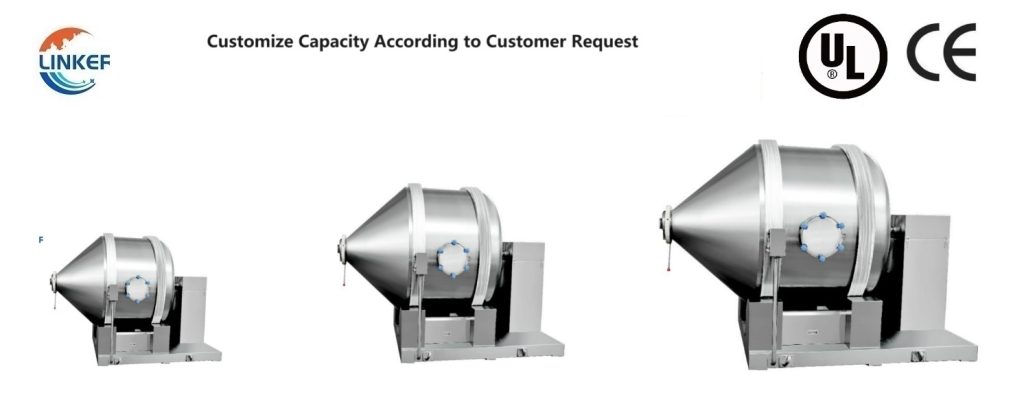
Parameters of Dry Powder Mixer:
| Model | L*W*H(mm) | Max Mixing Volume(L) | Spindle Speed(rpm/min) | Machine Weight(KG) | Total Power(KG) |
| YH-50 | 920×440×540×350 | 25 | 0-18 | 250 | 0.55 |
| YH-150 | 1140×610×900×445 | 75 | 0-16 | 320 | 0.75 |
| YH-300 | 1340×760×990×520 | 150 | 0-14 | 410 | 1.1 |
| YH-600 | 1615×960×1100×630 | 300 | 0-13 | 490 | 1.5 |
| YH-800 | 1730×1070×1200×700 | 400 | 0-12 | 560 | 2.2 |
| YH-1000 | 1900×1120×1300×710 | 500 | 0-12 | 740 | 22 |
| YH-1500 | 2050×1300×1480×830 | 750 | 0-12 | 850 | 3 |
| YH-2000 | 2280×1420×1620×910 | 1000 | 0-10 | 1050 | 4 |
| YH-3000 | 2505×1620×1830×1020 | 1500 | 0-10 | 1380 | 5.5 |
| YH-4000 | 3000×1800×2200×1300 | 2000 | 0-8 | 1650 | 55 |
| YH-6000 | 3400×2200×2500×1450 | 3000 | 0-6 | 2300 | 7.5 |
| YH-8000 | 3677×2300×2850×1630 | 4000 | 0-6 | 3500 | 11 |
| YH-10000 | 3800×2500×2950×1680 | 5000 | 0-6 | 3800 | 11 |
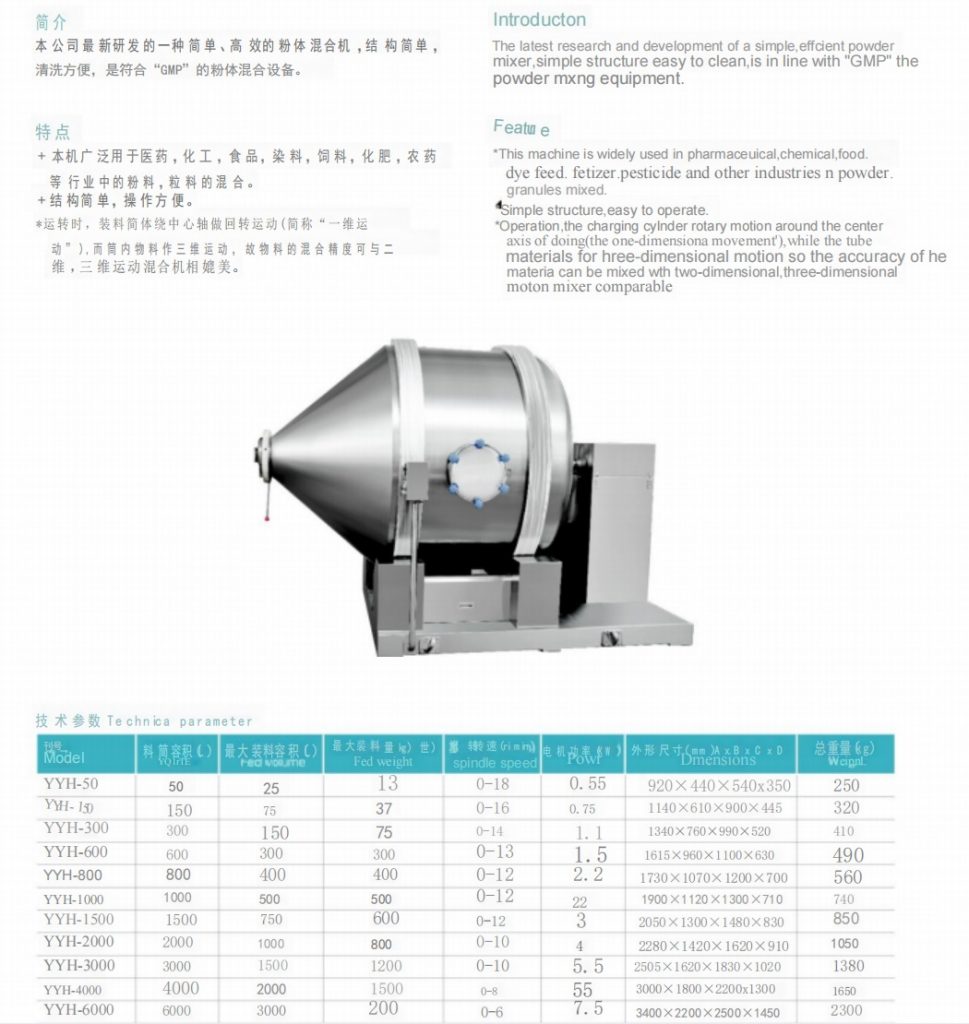
I. What is Dry Powder Mixer?
Bringing Dry Ingredients Together: An Age-Old Industrial Practice
In the realm of processing industries, blending dry ingredients represents one of the most time-honored unit operations. Throughout the years, a diverse range of equipment has been developed to achieve the uniformity of dry materials, including powders. To begin our exploration, let’s delve into some common definitions that illuminate the world of powder mixers.
Powder mixers, as their name suggests, encompass various types of sanitary mixers utilized for two primary purposes:
Combining Two Flow-able Dry Materials
Blending a Powder with a Liquid
While this article primarily focuses on the blending of powders into liquids, it’s worth noting that certain mixing technologies find application in both scenarios.
Dry Powder Mixer, commonly employed in the dairy, food, and beverage sectors, come in two primary variations: batch-type and continuous feed. Their effectiveness hinges on the specific mixing technology they employ, which, in turn, depends on the physical properties of the powder undergoing blending.
For powders characterized by low cohesion—meaning their particles don’t readily adhere to each other—a convective mixing process, as exemplified by the ribbon mixer mentioned below, can effectively unite the dry ingredients.
However, when dealing with cohesive materials—those prone to sticking together, such as fine powders or wet substances—a more robust mixing process becomes essential. This involves either the application of impact force or shear force to thoroughly amalgamate the ingredients. In subsequent sections of this article, we delve into high shear mixers and qualifiers, offering prime examples of these intensive mixing technologies.
The latest research and development of a simple,efficient powder mixer,simple structure easy to clean,is in line with “GMP” the powder mixing equipment.
- This machine is widely used in pharmaceutical, chemical,food. dye feed. fertilizer. pesticide and other industries n powder. granules mixed.
- *Simple structure,easy to operate.
- *Operation,the charging cylinder rotary motion around the center axis of doing(the one-dimensional movement’),while the tube materials for three-dimensional motion so the accuracy of the material can be mixed with two-dimensional,three-dimensional motor mixer comparable
| Business Type: | Manufacturer/Factory | Main Products: | Mill, grinder, granulator, mixer, Crushing Equipment |
| Number of Employees: | 100 | Year of Establishment: | 2014.05 |
| Production Capacity | 5000Set/Year | After-sales Service: | Technical Support; on-line teach lessons |
| R&D Capacity: | ODM, OEM | Annual Output Value: | US$5 Million – US$10 Million |
| No. of R&D Staff: | 5 | No. of Production Lines: | 6 |
LK Mixer is a professional manufacturer for grinder, mixer and pulverizer. These machines are widely used in pharmaceutical, cosmetic, health care products and chemical industries. Our main product including granulating machine, grinder, mixer, dryer, etc. All mechanical products in accordance with the China GMP design requirements. And also we have other certifications such as CE, UL for motors.
Business Philosophy
“Quality is the main policy of sales” and “integrity is the principle of success” are the business philosophy of our people. We carry out one-year warranty, lifelong maintenance service, with technical consultation, with material test machine and other services, and long-term supply of equipment. Welcome new and old customers to negotiate cooperation!
Certifications:
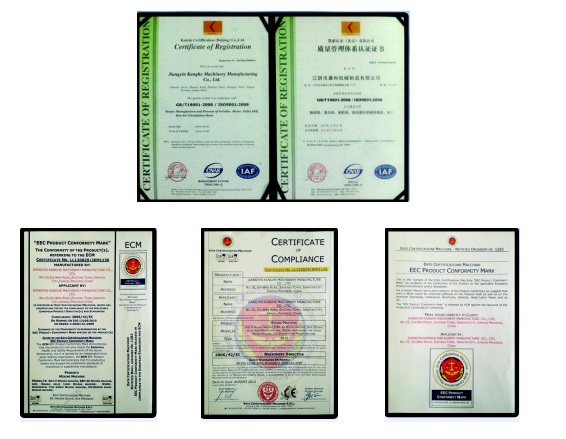
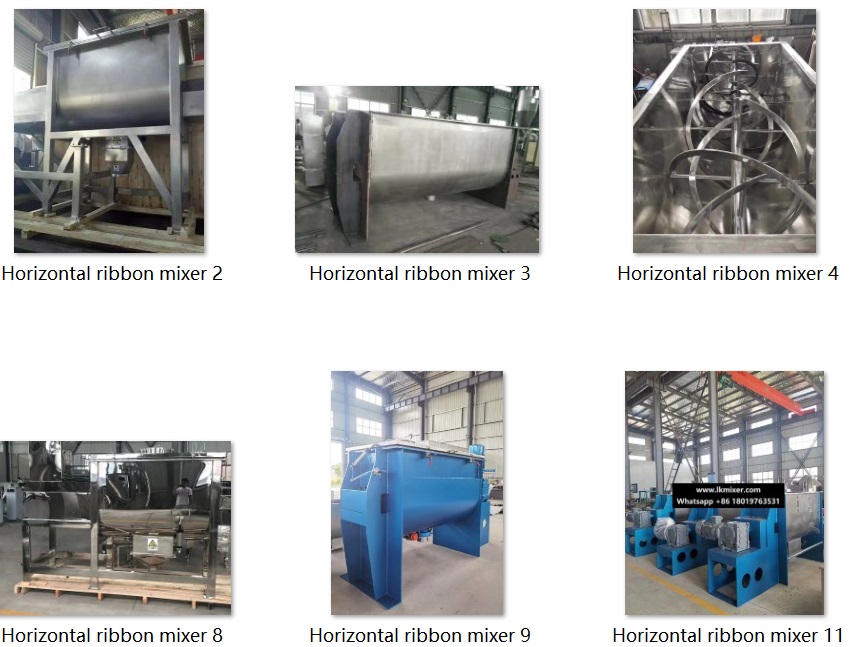
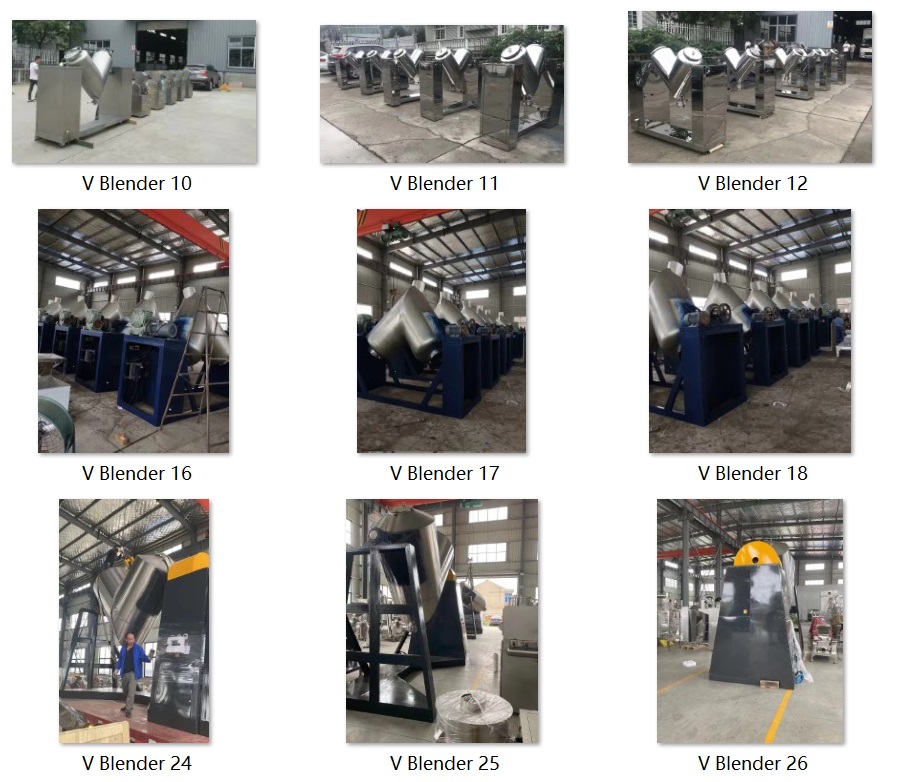
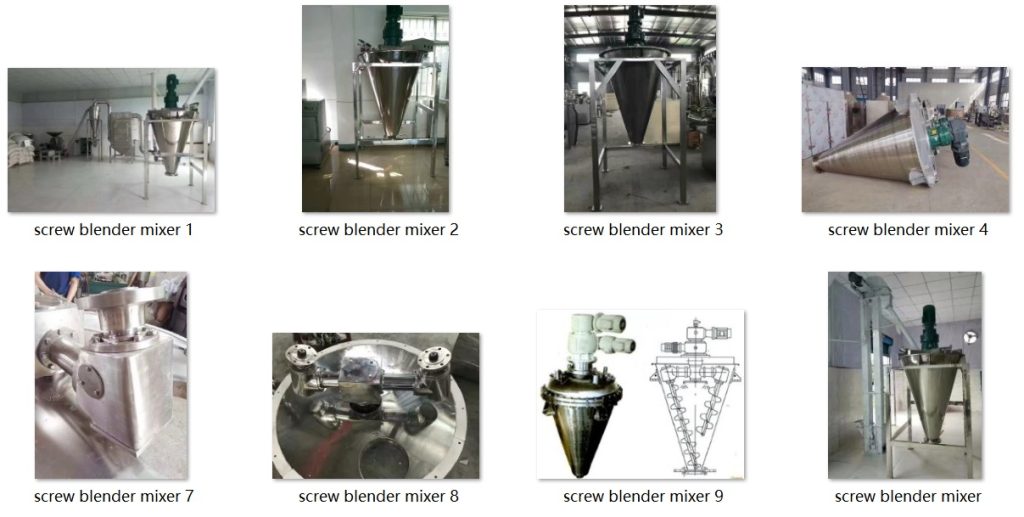
Electric Cabinet with UL Certification

Cyclone Processor and Motors:
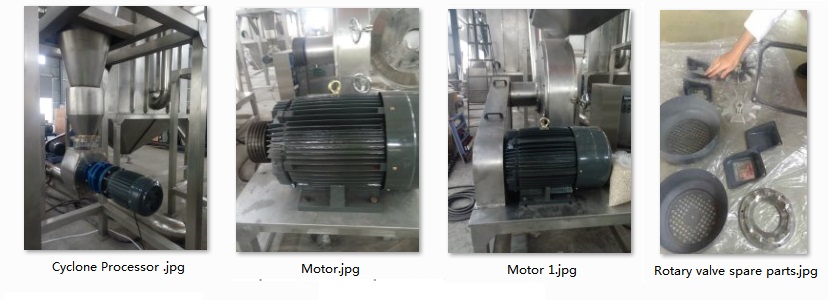
Spare Parts:
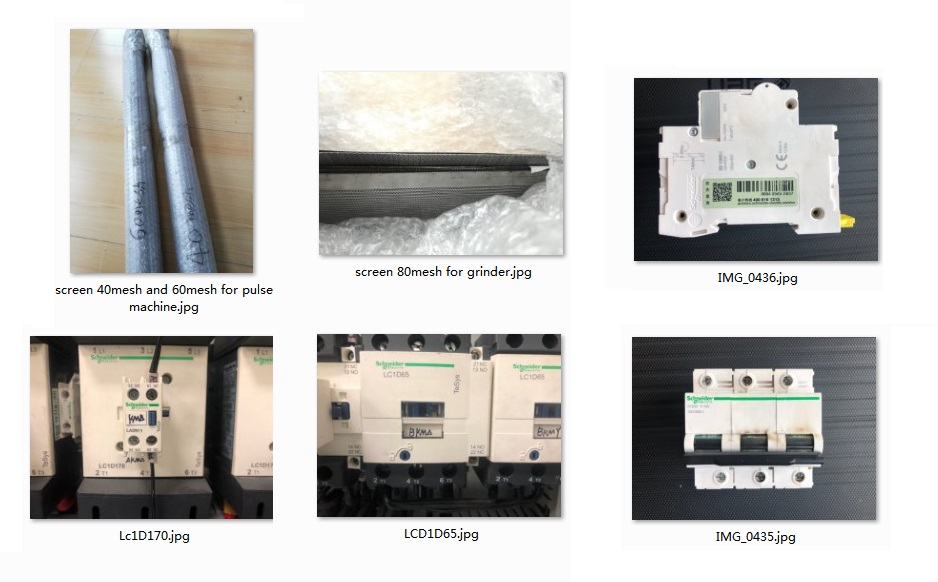
Small Machine Packing:
Small machine packed with export fumigation-free wooden cases, goes with bulk shipment or in container.
When packing small machines for sea shipment, it is important to take measures to ensure that the machines are protected from damage during transit. Here are some general steps that a manufacturer may follow when packing small machines for sea shipment:
- Clean and dry the machine: Before packing, the machine should be thoroughly cleaned and dried to prevent any moisture or debris from causing damage during transit.
- Disassemble the machine: If possible, the machine should be disassembled into its component parts to reduce its overall size and make it easier to pack.
- Wrap the machine in protective material: The machine should be wrapped in a layer of protective material, such as bubble wrap or foam, to protect it from scratches and impact during transit.
- Place the machine in a sturdy box: The wrapped machine should then be placed in a sturdy box that is appropriate for the size and weight of the machine. The box should be made of durable material, such as corrugated cardboard or plywood, and should be able to withstand the rigors of sea transit.
- Add packing material: The box should be filled with packing material, such as packing peanuts or air pillows, to provide cushioning and prevent the machine from shifting during transit.
- Seal the box: The box should be securely sealed with high-quality packing tape to prevent it from opening during transit.
- Label the box: The box should be clearly labeled with the machine’s name, weight, and any other relevant information, as well as the destination address and contact information.
Overall, the goal is to pack the small machine in a way that will protect it from damage during transit and ensure that it arrives at its destination in good condition. It is important to follow proper packing procedures and use high-quality packing materials to minimize the risk of damage during sea shipment.
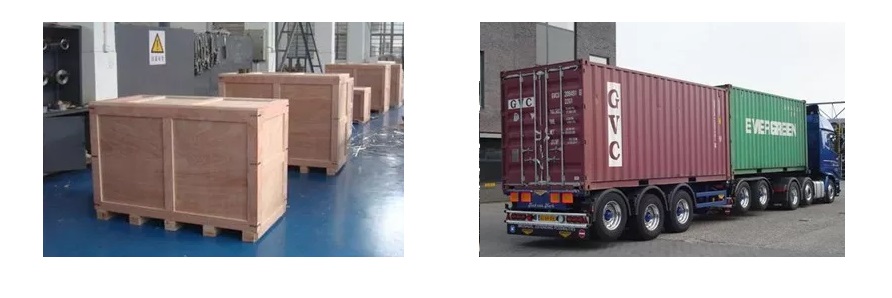
Large Machine Packing:
Packing a large machine for sea shipment can be a complex and challenging task. However, with careful planning and attention to detail, it is possible to pack a large machine for sea shipment in a way that will ensure that it arrives at its destination in good condition. Here are some general steps that a manufacturer may follow when packing up a large machine for sea shipment:
- Clean and prepare the machine: Before packing, the machine should be thoroughly cleaned and prepared. All fluids, such as oil or coolant, should be drained, and any loose or detachable parts should be removed.
- Disassemble the machine: If possible, the machine should be disassembled into its component parts to reduce its overall size and make it easier to pack. Each part should be carefully labeled and numbered to ensure that it can be easily reassembled at the destination.
- Protect delicate parts: Delicate or fragile parts should be wrapped in protective material, such as bubble wrap or foam, to protect them from damage during transit.
- Build a custom crate: A custom crate should be built around the machine to provide a secure and sturdy enclosure. The crate should be made of durable material, such as plywood, and should be designed to fit the machine snugly. The crate should also include braces or supports to prevent the machine from shifting during transit.
- Add cushioning material: The crate should be filled with cushioning material, such as packing peanuts or air pillows, to provide extra protection and prevent the machine from moving or shifting during transit.
- Securely fasten the machine: The machine should be securely fastened to the crate to prevent it from moving or shifting during transit. This may involve using straps, bolts, or other fasteners to hold the machine in place.
- Seal and label the crate: The crate should be securely sealed with high-quality packing tape, and should be clearly labeled with the machine’s name, weight, and any other relevant information. The destination address and contact information should also be clearly marked on the crate.
Overall, packing a large machine for sea shipment requires careful planning and attention to detail. It is important to use high-quality materials and follow proper packing procedures to ensure that the machine arrives at its destination in good condition. A professional packing and shipping company may be consulted to ensure that the machine is properly packed and prepared for sea shipment.
Customer Side Machine Groups Showcase Videos:
Dust Collector Shipment
Shipment – Packing Method
Two Large Industrial Grinder Ready to Ship
Domestic Shipment Show Case:
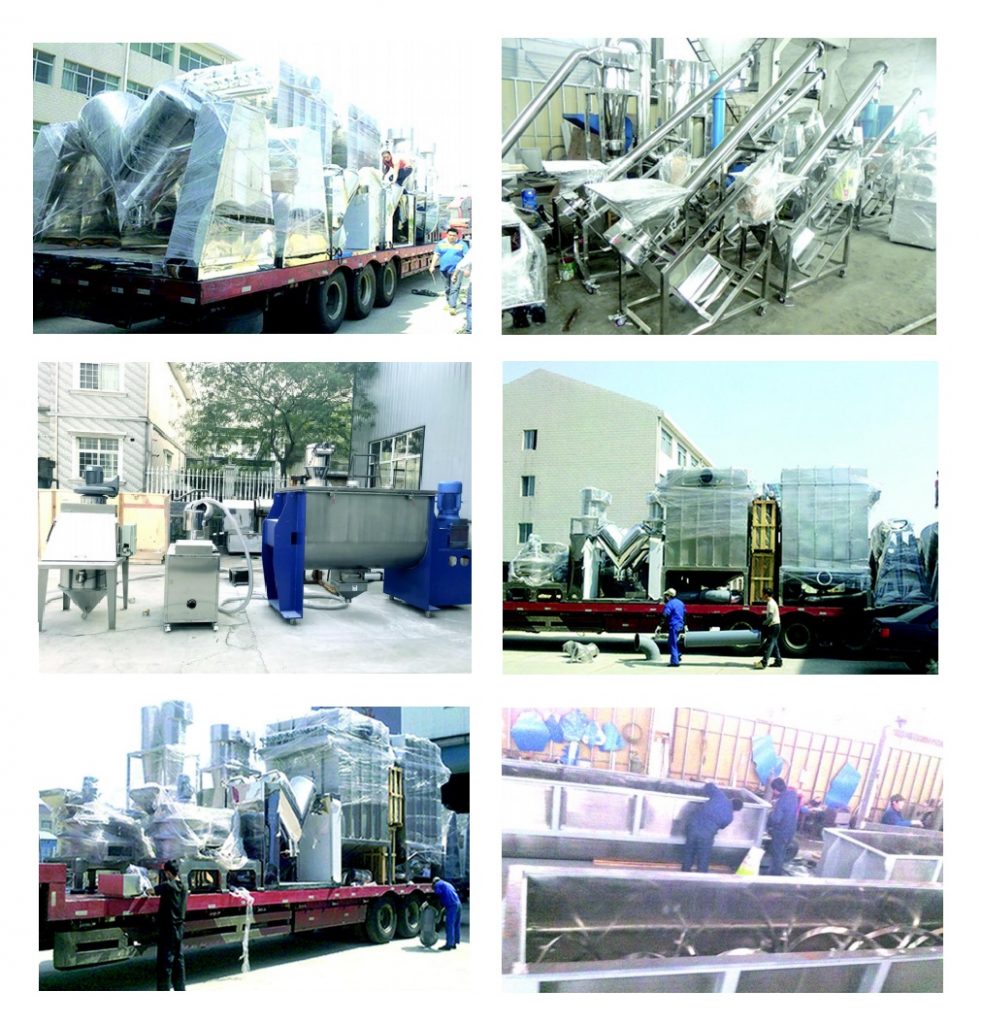
Installation Layout:
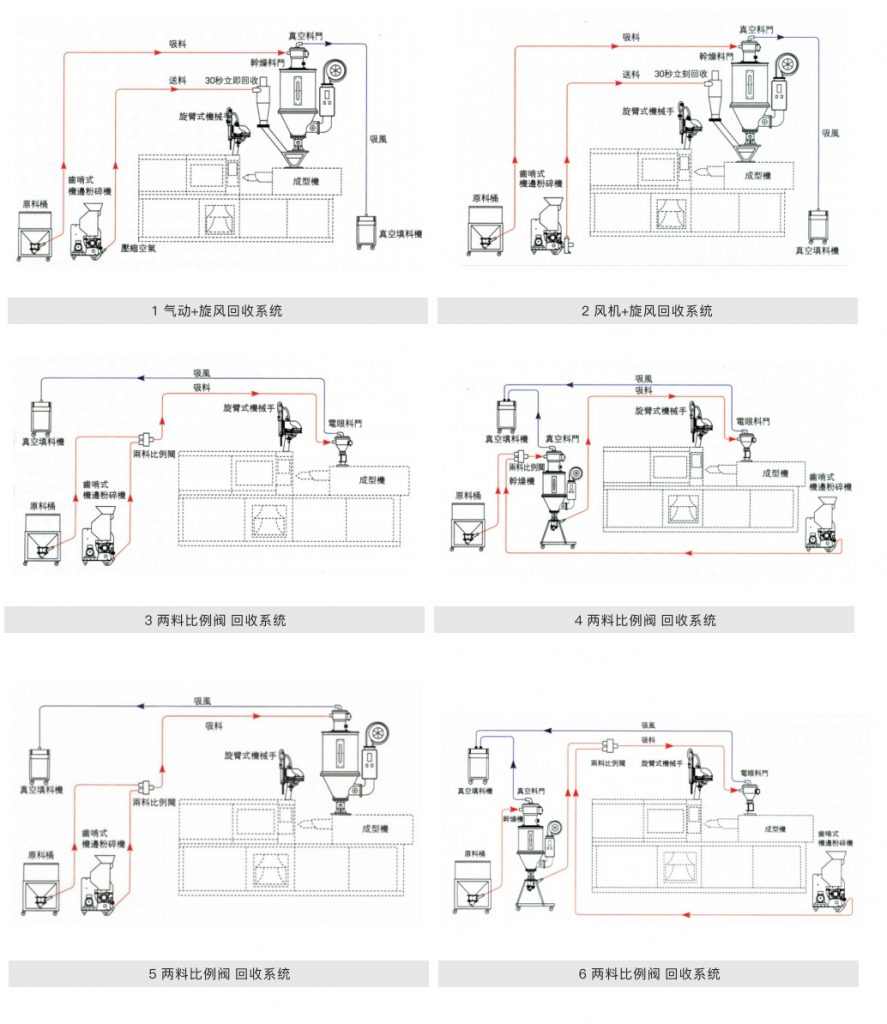
Maintenance and Safety Measures
Proper maintenance practices for the machine
Proper maintenance practices are essential for ensuring the efficient and safe operation of a universal grinder. Here are some maintenance practices that should be followed:
- Regular cleaning – The machine should be cleaned regularly to remove any debris, dust, or coolant that may accumulate on the machine’s surfaces. This can be done using a soft brush, air hose, or a cleaning solution.
- Lubrication – The machine’s moving parts should be lubricated regularly to reduce friction and wear. The manufacturer’s recommendations for lubrication intervals and types should be followed.
- Inspection – The machine should be inspected regularly for any signs of wear, damage, or misalignment. Any issues should be addressed immediately to prevent further damage or safety hazards.
- Replacement of worn or damaged parts – Worn or damaged parts should be replaced immediately with genuine parts from the manufacturer.
- Calibration – The machine should be calibrated regularly to ensure that it is operating within the specified tolerances and accuracy.
- Operator training – Proper operator training is essential for ensuring the safe and efficient operation of the machine. Operators should be trained on the proper operation, maintenance, and safety procedures for the machine.
- Record keeping – A maintenance log should be kept to track the machine’s maintenance history, including cleaning, lubrication, inspection, and repairs. This can help identify any trends or issues that need to be addressed.
Following these maintenance practices can help ensure the safe and efficient operation of a universal grinder, prolong its lifespan, and reduce the risk of downtime and costly repairs.
Safety measures for operators and workers
Safety measures for operators and workers are crucial when using a universal grinder. Here are some safety measures that should be followed:
- Personal protective equipment (PPE) – Operators and workers should wear appropriate PPE, including safety glasses, hearing protection, gloves, and safety shoes.
- Machine guards – The machine should be equipped with proper machine guards to prevent access to the grinding wheel during operation. The guards should be in good condition and properly installed.
- Lockout/tagout procedures – Lockout/tagout procedures should be followed to ensure that the machine is not accidentally started or energized during maintenance or repair.
- Training – Operators and workers should receive proper training on the safe operation of the machine, including the use of PPE, machine guards, and lockout/tagout procedures.
- Inspection – The machine should be inspected regularly for any signs of wear, damage, or misalignment that may pose a safety hazard.
- Proper use of grinding wheels – Operators should ensure that the grinding wheel is properly installed, dressed, and aligned. The grinding wheel should not be overloaded or forced into the material being ground.
- Proper handling of coolant – If coolant is used, operators should ensure that it is properly mixed, applied, and contained. Coolant should not be allowed to accumulate on the floor, as it can create a slipping hazard.
- Emergency procedures – Emergency procedures should be established and communicated to all operators and workers in case of an accident or injury.
Following these safety measures can help prevent accidents and injuries when using a universal grinder. It is important to prioritize safety and ensure that all operators and workers are trained and informed about the potential hazards of the machine.
About LKMixer
LKMixer is a professional manufacturer for fertilizer production line, grinder, mixer and granulator, shredder. These machines are widely used in food, pharmaceutical, cosmetic, health care products and chemical industries. The Food materials like Peanut, mushroom, seeds, potato, bean, tobacco, salt, cannabis, tea, Sugar, corn, Coffee, rice, pepper, grain as so on. Grinders have many types such as Pulse Dust Grinder which suitable for zero pollution environment, Turbine Mill which is suitable for coffee bean, 12-120mesh all can meet, Ultrafine Grinding Mill covers 80-200mesh, and also Winnowing Dust Grinder or other grinding machines like SF Hammer. Welcome to contact us for details. Contact us for more information. Proposal, catalog, quotation. Mobile/WhatsApp: +86 18019763531 Tel: +86 21 66037855 Email: sales@lkmixer.com
Contact Us
FAQ(Click and See More)
Yes, our factory produced grinder, mixer, pulverizer for over 20 years.
Yes, we have video and word file lessons to teach customer how to operate the machine.
Yes, water cooling system can customize according to customer request. Many of the machine we producing is with water cooling system.
Yes, we provide the suitable screen and knife and other spare parts all the life time with nice price for our customer.
We can provide 0.5mm, 1mm thickness screens.
Material type of screen: SUS304 stainless steel.
You can choose another type of screen, also stainless steel, like the follow video shows, the screen have 2 layers, one layer large hole, another layer 40mesh as you request. This two layers are welded together. this kind of screen is more cheap to save the cost.
Yes, we have CCC, GB, EN, IEC, UL certification for motors.
We have 20 years manufacturing experiences; 15600 cubic meters factory area; 5000sets annual capacity; 55 professional engineers;
South America: Brazil, Colombia, Peru, Bolivia, Uruguay, Paraguay ;Romania;
USA with UL Certification
Middle East: Saudi, Arabia, Oman, Turkey
Europe: Russia, Australia, Belarus, Ukraine, Poland
– 7*24 customer service online;
– 7*24 engineers online services;
– 12 months warranty services.
– We offer full services covers whole process of your new project. Including your factory feasibility assessment, process flow chart, preliminary factory machines layout and factory building planning, project budget estimation, project time schedule arrangements, etc.
– We supply sample processing tests as to your detail product. To estimate the capacity of machine, this helps you controls better to the capacity and get to know more accuracy of quantity of machine you need to book. In our test station where are equipped with our various machine products,this is also help you compare performances of different types of machines or process.
– For large machine. If neccessary, we can assign engineers to the your project site and offer on-site technical instruction and supervision during the machine installation, commissioning and test run.
– Warranty period is 12 months after installation.
– We offer lifetime service for our machine products after the delivery, and will follow up the machine status with our clients after the successful machine installation in our clients’ factories.
For details, please contact our project consultants, thank you.
– Choose small or large ? Calculate your current customer capacity request, this is to get a estimate capacity needs. To think about you only for small quantity use or large quantity. Do you want to expand your customer base so that need to expand your capacity in near future? If yes, you can order larger machine instead of small machine. If not, smaller one is more suitable for you.
– Choose single or whole group? Single machine is cheaper and easy to move from here to there, space location are also easy. Whole group machine including material feeder, main machine, cyclone sperator and rotary valve. Whole group machine not easy to move cause of link of each portions. But whole group also advantages such as easy to dust collect, save manpower. Think about clearly what you want, we would know which is right to choose.
– If you think about your customers and volume, you’ll be off to a good start in knowing what you need from your grinder.
If you are a large factory request several machine. You may think the question of quantity that you need to purchase. This question actually we have already talked when we previously discussed how much the grinder can produce in an hour.
Based on the capacity of how much kg/hour that we can get, it’s very each to calculate the quantity of machine that you may need finally.
One of the questions that may pay attention here is, how many hour you plan to work per day? If you plan to work 24 hours non-stop, you need to have cooling water system definitely to cool down the machine. And the working hour also need to be calculated into your capacity calculation.
Automatically material feeder helps to feed the raw material automatically, so that no need to stop and refill the hopper frequently. Cyclone Seperator helps output material quickly, vibrating table screener helps screen out the qualified fineness material. All these portion run automatically will significantly help improve the efficiency and capacity.
A good rule of thumb to remember is that a larger capacity usually also means a higher level of speed.
Quality is of paramount importance to just about everyone, and it should be to you, too.
Customers always want the quality in their purchasing, and they will keep long term business with high quality supplier.
Always offering high-quality grinder machine to our customers will earn us a solid reputation with them.
Keeps in mind about quality, we ensure our quality through following items:
– Material: we use 304 or 316 stainless steel body, 316 stainless steel for raw material contact portion.
The material of body always decide by customer, we will confirm the material type with you before you load order.
– Cooling Water System: jaket design allow ooler temperatures while grinding, preventing the burning of the raw material.
– Grinding Disc and Knife Cutter Design: The industry standard in material for grinding discs is steel, but there are different types of steel to choose from, such as die-cast and tungsten carbide. Good disc and knife design helps cut the material efficienctly. This also ensure the high quality of result mesh fineness.
Convenience to operate for your employees and yourself is also very important.
Your operator may need to carry the material back and forth in batches. Your operator may need to stop machine to clear and clean machine frequently. Your operator may also need to do screens the size of fineness after grinding and then put the inqualified powder back to machine to do grinding second time.
Yes, these are all the problems. But LINKER Pulverizer helps you reduce or solve these probems. You only need to buy the whole set group, which including automatically feeding system, grinding main machine, cyclone separator system, screen system after grinding and even an back material system back to grinder.
Save the manpower also helps to save the cost.
Yes. 100% of inspection for each step of products will be carried out by QC department until shipping.
An industrial grinder is a machine designed to reduce the size of materials by grinding or crushing them. Here are some of the common tasks performed by industrial grinders:
Grinding: Industrial grinders are commonly used for grinding materials to a desired particle size. This can be done using various types of grinders, such as angle grinders, bench grinders, and surface grinders, depending on the specific application.
Crushing: Industrial grinders are also used for crushing materials into smaller pieces. This can be useful in various industries such as mining and construction, where materials need to be crushed for further processing.
Polishing: Industrial grinders can be used for polishing surfaces of materials to achieve a desired finish. This is commonly done using angle grinders and other handheld grinders.
Sharpening: Bench grinders are commonly used for sharpening tools, such as knives and scissors, by grinding them against a rotating abrasive wheel.
Overall, industrial grinders are versatile machines that can perform a wide range of tasks, depending on the specific application and type of grinder used.
Choosing the right crusher for your application involves considering a variety of factors. Here are some key factors to consider when choosing a crusher:
Type of material: The type of material that needs to be crushed is an important factor to consider. Different crushers are better suited for crushing different types of materials. For example, jaw crushers are well-suited for crushing hard, abrasive materials like granite, while impact crushers are better for softer materials like limestone.
Size of material: The size of the material to be crushed is also an important consideration. Larger materials may require a larger crusher or a crusher with more power.
Capacity: The amount of material that needs to be processed per hour or per day is another important consideration. Different crushers have different capacities, so it’s important to choose a crusher that can handle the volume of material you need to process.
Desired final product size: The final product size you need will also impact your crusher choice. Some crushers produce a more uniform product size than others, while others are better for creating coarse or fine materials.
Maintenance requirements: The maintenance requirements of the crusher you choose can also be an important consideration. Some crushers require more maintenance than others, and the cost and frequency of maintenance should be factored into your decision.
Budget: Finally, your budget is an important consideration when choosing a crusher. Different crushers have different price points, so it’s important to choose a crusher that fits within your budget.
Overall, choosing the right crusher requires careful consideration of your specific application and requirements, and weighing the pros and cons of each option. Consulting with a knowledgeable equipment supplier or manufacturer can also be helpful in making an informed decision.
An industrial grinder is a machine used to reduce the size of materials through grinding or crushing. These machines are commonly used in various industries such as mining, construction, manufacturing, and food processing.
Industrial grinders come in different types and sizes, depending on the specific application and the material being processed. Some of the common types of industrial grinders include:
Angle grinders: These are handheld grinders used for cutting, grinding, and polishing various materials.
Bench grinders: These are stationary grinders mounted on a bench or pedestal and used for grinding and sharpening tools.
Surface grinders: These are machines used to grind flat surfaces of materials to a high degree of precision.
Cylindrical grinders: These are machines used for grinding cylindrical surfaces of materials.
Centerless grinders: These are machines used to grind cylindrical and other types of workpieces without using a centering device.
Industrial grinders are essential machines in many industries, as they help reduce the size of materials, improve efficiency, and increase productivity.
Jet mills, pin mills, and ball mills can all be categorized as ultrafine grinders. These mills are capable of producing very fine particles and powders, and are commonly used in industries such as pharmaceuticals, food processing, and cosmetics, where ultrafine particles are required for various applications. The specific type of mill used as an ultrafine grinder will depend on the material being processed and the desired end product.
Ultrafine grinders use mechanical grinding and air pressure to achieve size reduction. In these machines, the material to be ground is fed into a grinding chamber, where it is subjected to mechanical forces such as impact, compression, and attrition. As the material is ground, it is also exposed to a stream of high-pressure air or gas, which helps to break down the particles and create a fine powder.
The combination of mechanical grinding and air pressure allows ultrafine grinders to achieve a very fine particle size, often in the sub-micron or nanometer range. This makes them particularly useful for applications that require very small particle sizes, such as in the pharmaceutical, cosmetics, and food industries.
A turbo grinder is a type of angle grinder that is specifically designed for heavy-duty applications, such as grinding and cutting thick metal and concrete. It features a high-powered motor and a specialized blade or wheel that rotates at high speeds to remove material quickly and efficiently.
Turbo grinders are typically larger and heavier than standard angle grinders, and are often used in industrial settings such as construction sites and metalworking shops. They are capable of removing large amounts of material in a short amount of time, making them ideal for projects that require aggressive grinding or cutting.
Some turbo grinders may also come equipped with dust collection systems, which help to control the amount of debris and dust generated during use. This can be especially important when working with concrete or other materials that create a lot of dust when ground or cut.
In pharmacy, a hammer mill is a type of size reduction equipment that is used to reduce the particle size of various types of pharmaceutical ingredients.
Hammer mills are commonly used in the pharmaceutical industry for grinding and milling a wide range of materials, including:
- Active pharmaceutical ingredients (APIs): Hammer mills can be used to grind APIs into fine powders for use in tablet and capsule formulations.
- Excipients: Hammer mills can be used to grind excipients, such as lactose and magnesium stearate, into fine powders for use in tablet and capsule formulations.
- Raw materials: Hammer mills can be used to grind raw materials, such as herbs and spices, into fine powders for use in herbal medicines and supplements.
- Drug delivery systems: Hammer mills can be used to grind materials for drug delivery systems, such as nanoparticles and microparticles.
- Formulation development: Hammer mills can be used in formulation development to grind and blend various materials to achieve a desired particle size and consistency.
Overall, the use of a hammer mill in pharmacy allows for efficient and precise size reduction of a wide range of pharmaceutical ingredients, which is important for ensuring the quality and effectiveness of pharmaceutical products.
A pulverizer is a type of mechanical equipment that is used for grinding, crushing, or pulverizing different materials into smaller particles. Pulverizers are commonly used in a variety of industries, including mining, construction, agriculture, food processing, and pharmaceuticals.
The main purpose of a pulverizer is to reduce the size of materials to a fine powder, which is required for various applications. Pulverizers use a variety of mechanisms to accomplish this, including:
- Impact: The pulverizer uses high-speed rotating hammers or blades to impact and crush the material.
- Shear: The pulverizer uses sharp blades to cut and shear the material.
- Compression: The pulverizer uses rollers or plates to compress and crush the material.
- Attrition: The pulverizer uses friction to break down the material.
Pulverizers can be used for a variety of materials, including coal, rock, clay, limestone, wood, and various types of ores. They are commonly used in the mining industry to crush and grind ore into fine particles for further processing.
In addition to mining, pulverizers are also used in the food industry to grind spices, sugar, and other food products into fine powders. They are also used in the pharmaceutical industry to pulverize tablets, capsules, and other forms of medication for further processing.
1. Please provide to us the product material you are use the machine to grinding for.
2. The capacity you request.
3. Consider the layout of your factory, the height width and length of the machine location.
4. If your product material is not normal type, we can arrange trail to estimate the capacity of output.
5. Our sales will recommend the right mode to you.
Yes, large machine is the major products we are producing. These machine exported to over 30 countries and regions, customer feedback quite good.
Because the medium or small size running speed is faster than larger machine. The noise is decided by the running speed. Also, if there is hole open on the machine, the noise will also larger.
It is totally ok to use. No leakage.
ok, it is no problem, we can add emergency shut off, if the main grinder door open, the machine can not start, and if the machine in running and the main grinder door open, the machine will stop, but the running of the machine can not stop immediately because of the iterance. The rotating of the spindle will stop slowly after the machine shut down because of inertia, so it is still dangerous to open the door in running of machine.
– Yes, OEM or ODM. Machine can be customized according to customer detail requirement, including capacity and voltages, motor certifications.
– Drawing and raw materials also can be customized.
Our products includs powder grinding mills, classifiers, coating machines, mixing machines, etc.
Normally 60 to 90 days after receive the deposit payment.
– 50% by T/T deposit payment.
– 50% balance by T/T before shipment.
– For machines, we ship with export wooden box and pallet suitable for long time boat transportation in standard containers or Bulk by sea.
– For spare parts, wooden Case and pallet for delivery by air.
We send engineers to the clients’ project site and offer on-site technical instruction and supervision during the machine installation, commissioning and test run.
Right size is definitely important for grinder business.
If your business is small, you may not have the space to accommodate a large grinder. Read keep in mind, While, that a smaller grinder doesn’t have to mean that it’s not able output as much as a bigger one.
On the contrary, if you have a lot of space, you may require different things from your grinder.
For example, you may want to have dust collector and material feeder for your enviornment production and operation convenience.
Operating Parameters Influencing Powder Mixing Efficiency
Several operating parameters play a pivotal role in determining the efficiency of powder mixing. In general, operators of sanitary processing plants strive to minimize mixing time to enhance production line efficiency. When dealing with larger volumes of powder, the blending process naturally takes longer. However, it’s important to note that doubling the volume doesn’t necessarily translate to doubling the required mixing time.
Higher mixing speeds typically lead to shorter mixing durations. Nevertheless, it’s crucial to exercise caution when using excessively high mixing speeds, especially with certain powders. Excessive speeds can result in particle breakage and potentially impact product consistency. Therefore, processors must exercise due diligence, taking into account the specific characteristics of the powders being mixed, to strike the right balance between speed and product quality.
Recommend Reading
Table of Contents
Toggle
